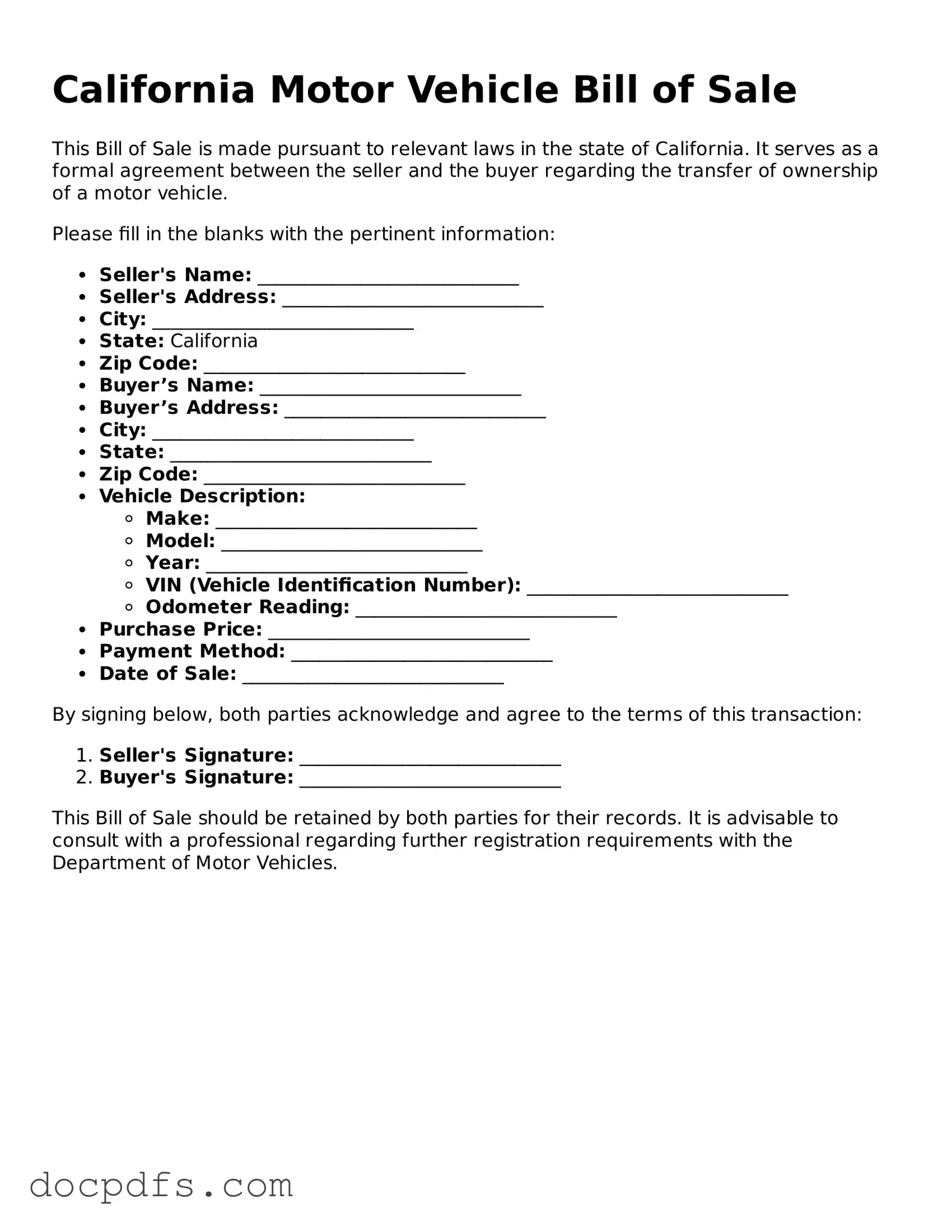Free California Motor Vehicle Bill of Sale Form
The California Motor Vehicle Bill of Sale form is a crucial document used in the transfer of ownership for vehicles in the state. This form serves as a receipt for the transaction, providing essential details about the vehicle and the parties involved. Understanding its components and requirements can help ensure a smooth and legal transfer process.
Open Motor Vehicle Bill of Sale Editor Now
